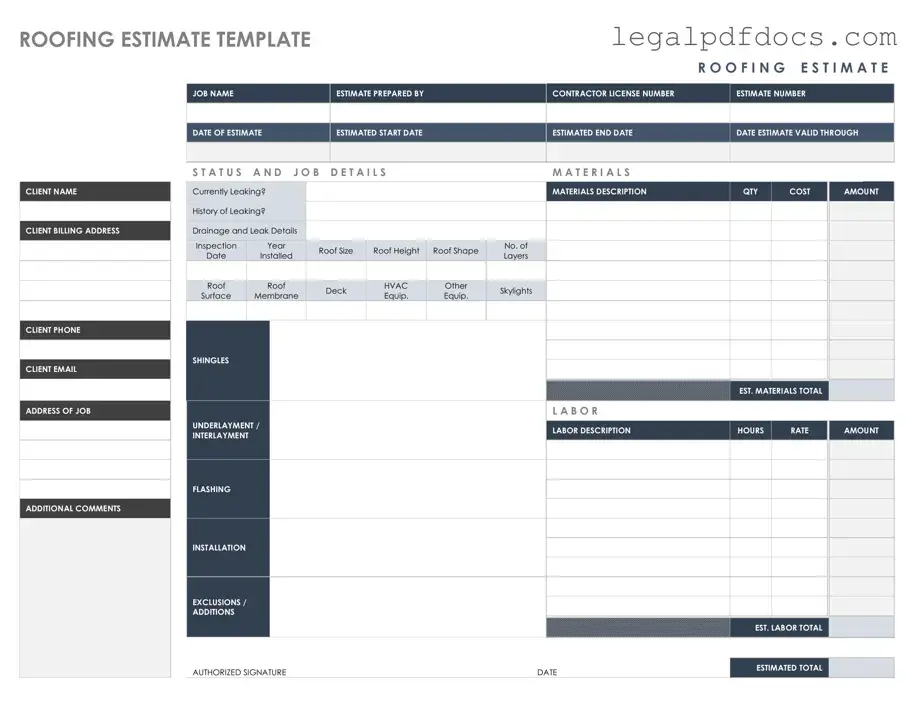Fill Out a Valid Roofing Estimate Template
A Roofing Estimate form is a document used by homeowners and contractors to outline the costs and details associated with a roofing project. This form helps ensure transparency and provides a clear understanding of the work to be performed. For accurate and detailed estimates, fill out the form by clicking the button below.
Open Roofing Estimate Editor Here
